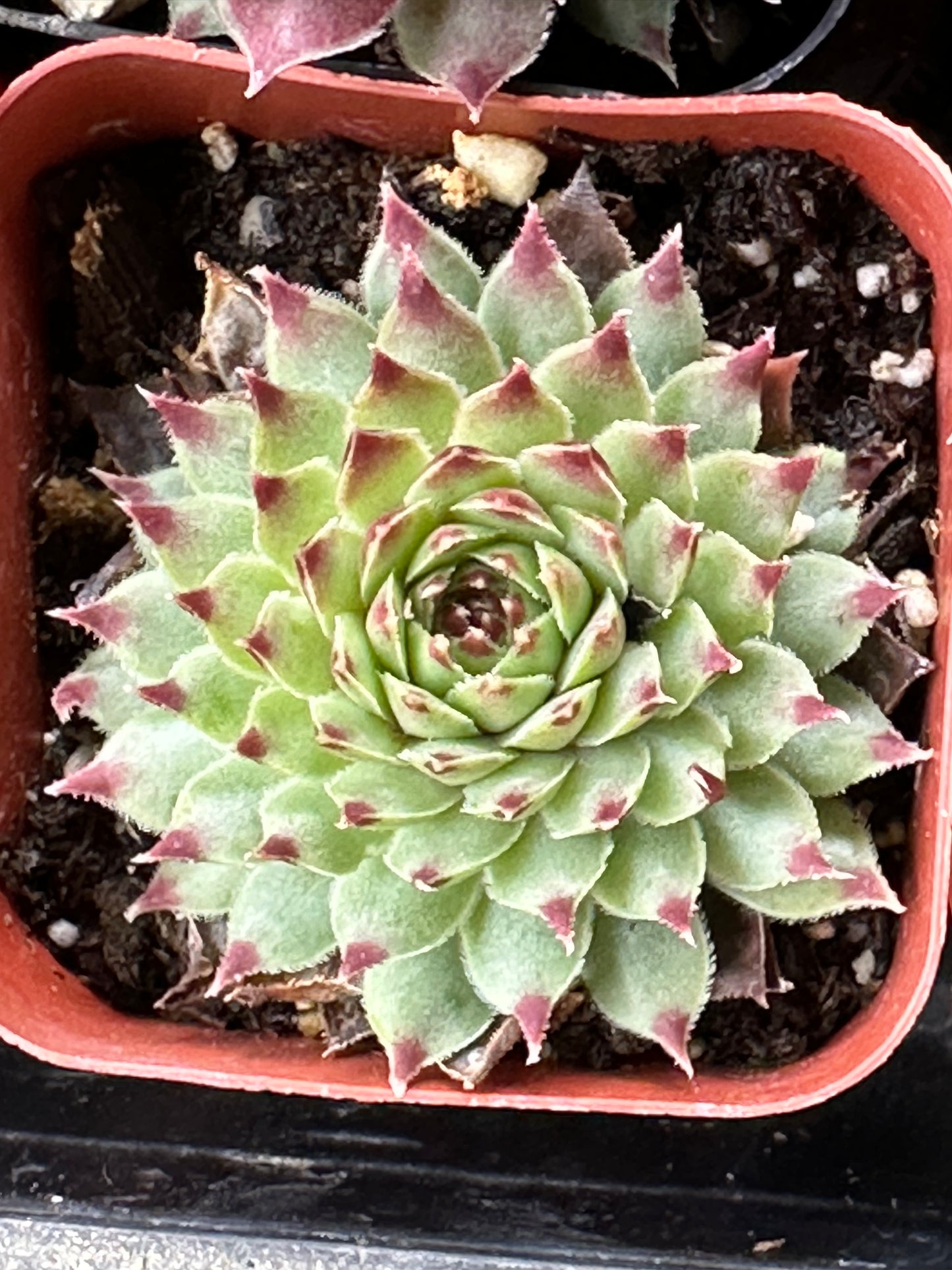SEAH
Sempervivum tectorum ssp. calcáreo
Sempervivum tectorum ssp. calcáreo
Precio habitual
$2.99 USD
Precio habitual
$4.99 USD
Precio de oferta
$2.99 USD
Precio unitario
/
por
Los gastos de envío se calculan en la pantalla de pago.
No se pudo cargar la disponibilidad de retiro
Sempervivum tectorum ssp. calcareum, commonly known as the Houseleek or Hen and Chicks, is a hardy and attractive succulent plant. Here is an in-depth look at its morphological characteristics, growth habits, maintenance points, and reproduction methods:
Morphological Characteristics
- Leaves: This subspecies has thick, fleshy leaves that form tight rosettes. The leaves are green with red tips, sometimes taking on a more intense red hue during colder months or under stress conditions. The leaf surfaces are covered with a fine, web-like hair.
- Size: Each rosette can grow up to 10 cm (4 inches) in diameter. The plant stays relatively low to the ground, typically not exceeding 15 cm (6 inches) in height.
- Flowers: It produces star-shaped, pink to red flowers that bloom on tall, erect stalks in early to mid-summer. After flowering, the rosette that produced the flower usually dies.
- Rosettes: The central rosette is surrounded by smaller rosettes, forming a cluster that resembles a hen surrounded by her chicks, hence the common name.
Growth Habits
- Light: Prefers full sun to partial shade. Adequate sunlight is necessary for the plant to maintain its compact rosette form and vibrant coloration.
- Temperature: Extremely cold-hardy, it can survive temperatures well below freezing, making it suitable for outdoor cultivation in many climates.
- Water: Being a drought-tolerant plant, it requires minimal watering. Allow the soil to dry completely between watering sessions to prevent root rot.
Maintenance Points
- Soil: Requires well-draining soil. A mixture of potting soil with sand or other gritty materials is ideal to improve drainage.
- Pot: When grown in containers, ensure the pot has good drainage holes.
- Fertilizer: Generally does not require fertilizer. If desired, a balanced, slow-release fertilizer can be applied at the beginning of the growing season.
- Pruning: Deadheading is not necessary, but removing dead rosettes can help prevent rot and maintain the plant’s appearance.
Reproduction Method
- Offsets: The most common method of propagation is through offsets. The "chicks" can be easily separated from the "hen" when they have formed their own roots and planted elsewhere.
- Leaf cuttings: While not as common, leaves can sometimes be propagated, though success rates are lower compared to offsets.
- Seeds: Sempervivum tectorum ssp. calcareum can also be grown from seeds, though this method is less common. Seeds should be sown in well-draining soil and kept moist until germination.
Sempervivum tectorum ssp. calcareum is celebrated for its resilience and ease of care, making it a popular choice for rock gardens, green roofs, and succulent collections. Its ability to thrive in poor soil and resist drought and frost allows it to be a versatile addition to both indoor and outdoor gardens.
Care Tips
Care Tips
Compartir


